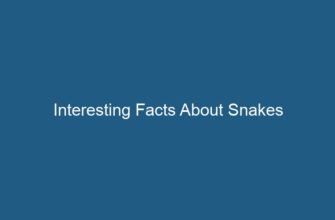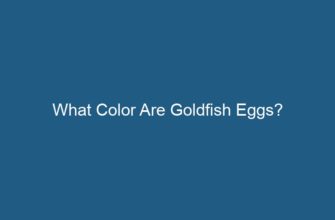Plankton is a diverse group of organisms that float or drift in aquatic environments. These organisms play a crucial role in the food chain and are vital for the health of marine ecosystems. In this article, we will explore various examples of plankton, ranging from phytoplankton to zooplankton. Let’s dive in!
1. Phytoplankton
Phytoplankton are tiny, plant-like organisms that are the primary producers in aquatic ecosystems. They harness sunlight and convert it into energy through photosynthesis. Here are some examples of common phytoplankton:
- Diatoms: Diatoms are unicellular algae that have silica shells. They are abundant in both freshwater and marine environments and contribute significantly to the production of oxygen.
- Dinoflagellates: These single-celled organisms have two flagella, which enable them to move through the water. Some species of dinoflagellates are bioluminescent, creating mesmerizing glowing displays in the ocean.
- Coccolithophores: Coccolithophores are phytoplankton with intricate calcium carbonate shells called coccoliths. These shells reflect light, giving the ocean a milky appearance in certain areas.
- Green Algae: Green algae are a diverse group of phytoplankton that are often found in freshwater environments. They are known for their chlorophyll pigments, giving them a green color.
2. Zooplankton
Zooplankton are small, animal-like organisms that feed on other planktonic organisms. They serve as a crucial link between the primary producers and higher trophic levels in the food chain. Here are some examples of zooplankton:
- Rotifers: Rotifers are microscopic animals that have cilia-like structures called corona, which they use for locomotion and feeding. They are often found in freshwater environments and are an essential food source for many aquatic organisms.
- Copepods: Copepods are tiny crustaceans that are among the most abundant zooplankton in the ocean. They play a vital role in transferring energy from phytoplankton to higher trophic levels.
- Krill: Krill are small, shrimp-like crustaceans that are a crucial food source for many marine animals, including whales and penguins. They form massive swarms and undertake vertical migrations in response to changing light conditions.
- Jellyfish: Although jellyfish are often associated with larger organisms, they begin their life cycle as tiny larvae known as planulae, which are part of the zooplankton community. As they grow, they develop into the iconic jellyfish form.
Plankton | Science for Kids
3. Bacterioplankton
Bacterioplankton are the smallest members of the plankton community, consisting of bacteria and archaea. They play a vital role in nutrient cycling and the decomposition of organic matter in aquatic environments. Here are some examples of bacterioplankton:
- Cyanobacteria: Cyanobacteria, also known as blue-green algae, are photosynthetic bacteria that can be found in both freshwater and marine environments. They are capable of fixing atmospheric nitrogen, making them essential for nitrogen cycling.
- Prochlorococcus: Prochlorococcus is a type of cyanobacteria that is considered one of the most abundant photosynthetic organisms on Earth. They are particularly prevalent in nutrient-poor regions of the ocean.
- Bacteroidetes: Bacteroidetes are a diverse group of bacteria that play a crucial role in the degradation of complex organic compounds. They are found in various aquatic environments, including oceans, rivers, and lakes.
4. Meroplankton
Meroplankton are organisms that spend only part of their life cycle as plankton. They typically begin as planktonic larvae before undergoing metamorphosis into their adult form. Examples of meroplankton include:
- Crustacean Larvae: Many crustaceans, such as crabs, lobsters, and shrimp, start their life cycle as planktonic larvae. These larvae are often highly specialized for planktonic life and undergo dramatic changes during their development.
- Sea Urchin Larvae: Sea urchins have a complex life cycle that involves a planktonic larval stage known as echinopluteus. These larvae have distinct structures, including long arms and spines, which aid in their dispersal.
- Starfish Larvae: Starfish, or sea stars, have a larval stage called bipinnaria, which is part of the meroplankton community. These larvae undergo metamorphosis into their adult form, developing their characteristic five arms.
5. Mixoplankton
Mixoplankton are organisms that exhibit both autotrophic (photosynthetic) and heterotrophic (feeding on other organisms) characteristics. They have the ability to switch between these strategies depending on environmental conditions. Examples of mixoplankton include:
- Dinoflagellates: Some species of dinoflagellates are mixoplanktonic, capable of photosynthesis and predation. They can switch between these modes of nutrition depending on factors such as light availability and nutrient availability.
- Ciliates: Ciliates are single-celled protists that can be mixoplanktonic. They possess both chloroplasts for photosynthesis and specialized structures called cilia for capturing and consuming prey.
Conclusion
Plankton encompass a wide array of organisms that play critical roles in aquatic ecosystems. From the photosynthetic phytoplankton to the diverse zooplankton and bacterioplankton communities, each group contributes to the intricate web of life in the oceans, lakes, and rivers. Understanding the different examples of plankton is essential for comprehending the complex dynamics and interdependencies within these ecosystems.










